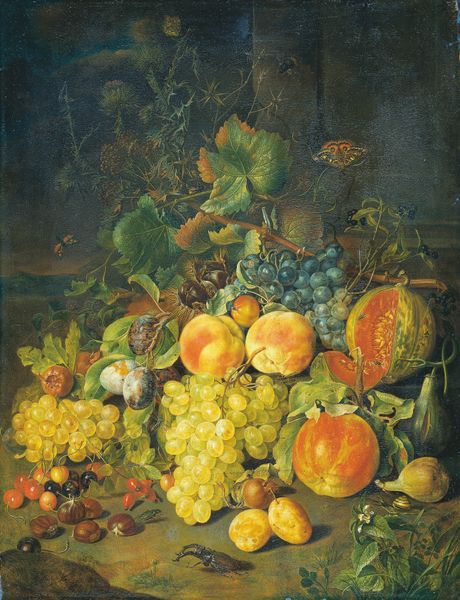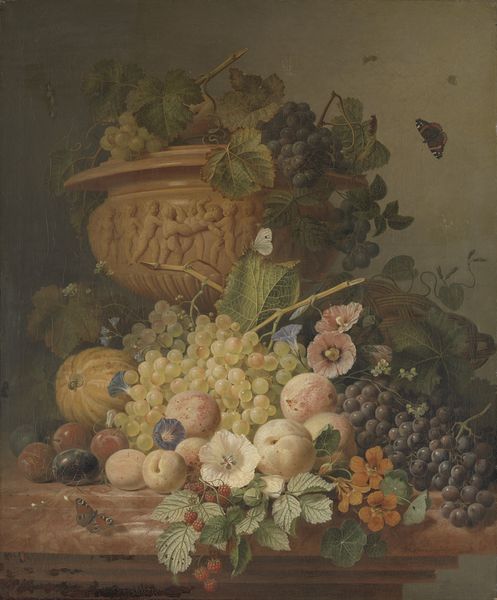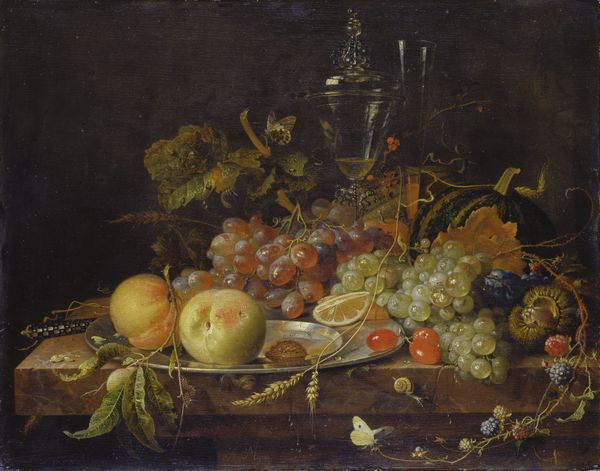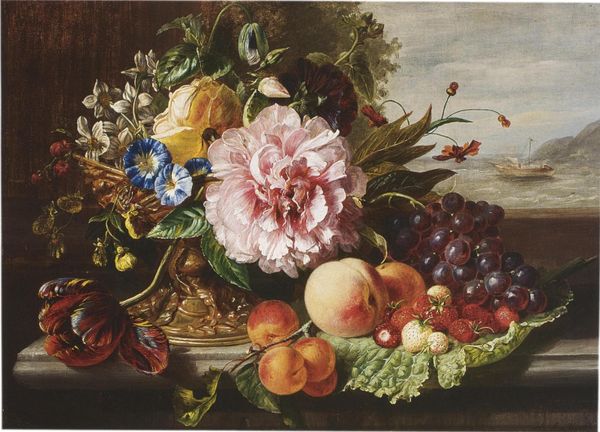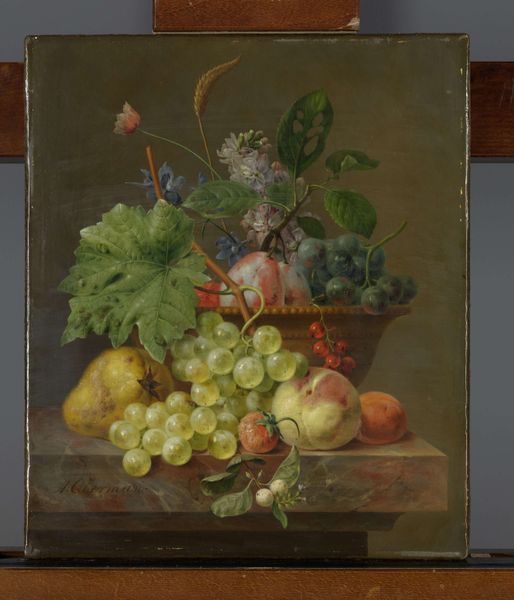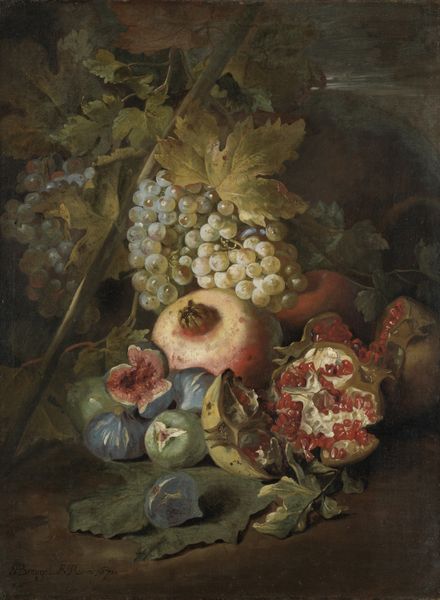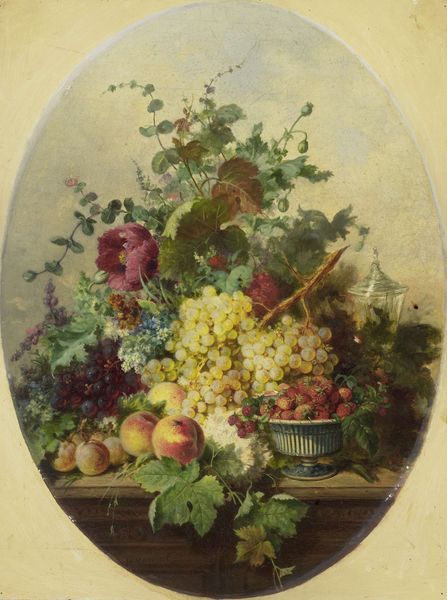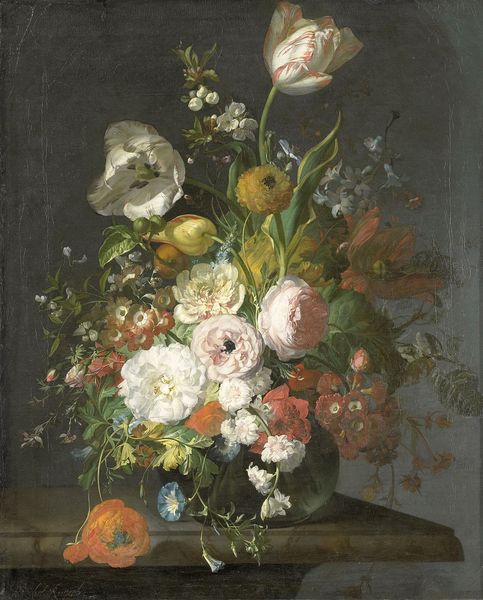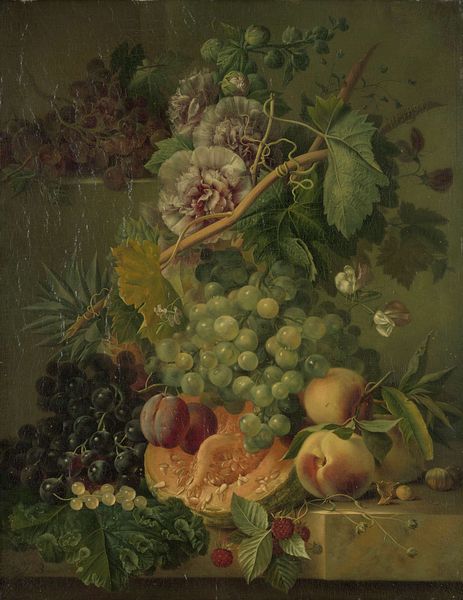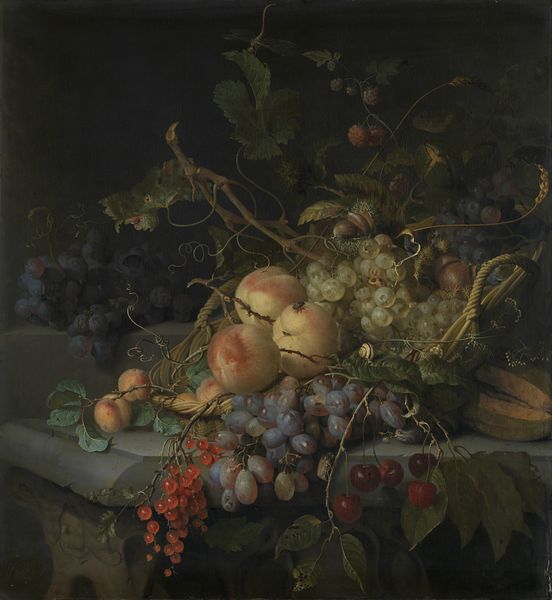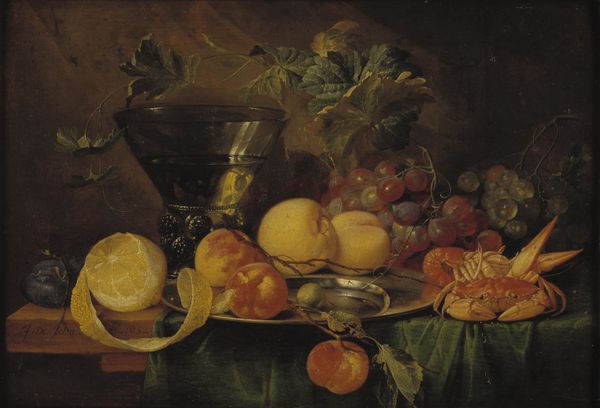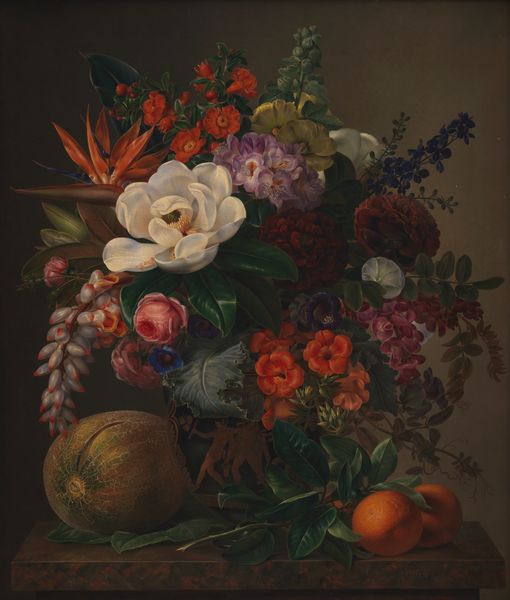
oil-paint
#
gouache
#
baroque
#
oil-paint
#
oil painting
#
vanitas
#
fruit
#
underpainting
#
watercolor
Dimensions: height 50.5 cm, width 42.5 cm, depth 7.5 cm
Copyright: Rijks Museum: Open Domain
Curator: Ah, isn’t it lovely? We’re looking at Jan van Huysum’s “Still Life with Fruit,” probably painted sometime in the first half of the 18th century. Editor: The first thing I notice is this sense of abundance, and decay sitting right next to each other. I mean, those luscious grapes, almost translucent, but also… is that a split pomegranate? Are those leaves browning at the edges? It’s unsettlingly beautiful. Curator: It's vanitas, for sure, meant to remind us that beauty—like those perfectly rendered fruits—is fleeting. All done in oils, painstakingly applied. He was renowned for his meticulous technique, I think! There is an inherent paradox; beauty in service to mortality. Editor: The “vanitas” tradition can't be separated from the global context of trade and consumption—these feasts of the eyes, this demonstration of painterly skill, made possible by a colonial project predicated on violently extracting wealth from the land and the labor of enslaved people. Curator: True, but the detail! I mean, look at how he captures the light on the grapes. He's playing with ideas about mortality, beauty, and our short time here but I'm just sort of overcome by the artistry, and its loveliness. And do you see the tiny insects on the melon and on the bunch of grapes. Editor: Yes, they are there; tiny participants that are part of the painting’s food chain! But look how these works romanticized and aestheticized exploitative global systems. How do we, today, contend with the exquisite allure of these pieces while remaining mindful of their entanglement with social inequalities? Curator: It is tricky; I suppose it makes you question what makes art morally worthy or artistically skillful; or even "good art", if there even is such a thing? And the politics of pleasure—should we feel guilty for liking something like this when such injustice was part of its context. It's complicated. Editor: Precisely! Recognizing this painting’s position as a piece produced within exploitative structures allows for a richer, critical appreciation. It pushes us to actively interrogate the dynamics of looking, owning, and representing within the canvas. Curator: Thank you! That perspective gives one a lot to consider. I know that whenever I see fruit depicted I’m always reminded of summer ending and cooler days coming! A lot of complex thoughts triggered by something as simple as a bit of oil paint.
Comments
No comments
Be the first to comment and join the conversation on the ultimate creative platform.
